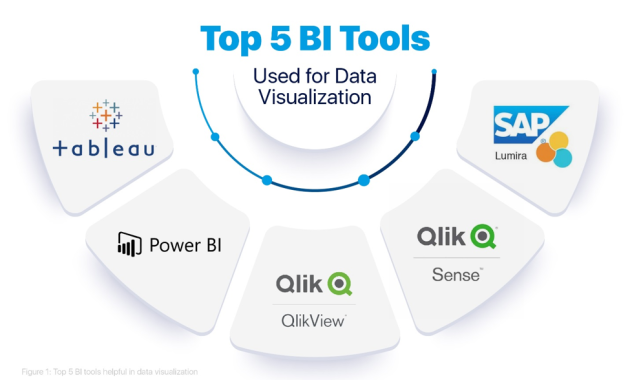
Why Gyms Need These BI Tools: Transforming Fitness with Data
In the competitive landscape of the fitness industry, gyms are constantly seeking an edge. They aim to attract and retain members while optimizing operations. The answer to these challenges often lies in harnessing the power of data. Business Intelligence (BI) tools offer gyms the capability to analyze data. This data helps make informed decisions and drive significant improvements. This article explores why gyms need these BI tools and how they can revolutionize the fitness experience.
Understanding the Power of Business Intelligence
Business Intelligence tools are software applications. These tools collect, process, and analyze large datasets. They transform raw data into actionable insights. These insights empower businesses to understand trends, identify areas for improvement, and make data-driven decisions. For gyms, this translates into a deeper understanding of member behavior, financial performance, and operational efficiency.
Key Benefits of BI Tools for Gyms
Implementing BI tools can provide gyms with a multitude of benefits. These benefits can lead to enhanced profitability and member satisfaction.
- Improved Member Retention: Understanding member behavior is key to retention. BI tools analyze attendance patterns, class participation, and usage of gym facilities. Gyms can identify members at risk of canceling their memberships. They can then proactively engage with these members. This might involve personalized workout plans or special offers.
- Optimized Marketing Campaigns: BI tools help analyze the effectiveness of marketing efforts. They track the performance of different campaigns. This data allows gyms to optimize their marketing spend. They can focus on strategies that attract the most new members.
- Enhanced Operational Efficiency: Data analysis can reveal inefficiencies in gym operations. For example, BI tools can identify peak hours. This helps gyms optimize staffing levels and equipment allocation. This leads to better resource management.
- Data-Driven Decision Making: BI tools offer a centralized view of all key performance indicators (KPIs). This includes revenue, membership numbers, and operational costs. This enables gym owners to make informed decisions. They can also track progress towards their goals.
- Personalized Member Experience: By analyzing individual member data, gyms can personalize the fitness experience. They can tailor workout programs. They can also offer targeted recommendations based on member preferences. This increases member satisfaction and loyalty.
Specific BI Tools and Their Applications in Gyms
Several BI tools are available, each offering unique features and functionalities. Gyms should choose tools that align with their specific needs and budget. Here are some examples:
- Tableau: This tool excels in data visualization. It allows gyms to create interactive dashboards and reports. These reports make it easy to understand complex data.
- Power BI: Microsoft’s Power BI is a powerful and user-friendly BI tool. It integrates seamlessly with other Microsoft products. It provides a comprehensive solution for data analysis and reporting.
- Qlik Sense: Qlik Sense is known for its associative data modeling. This enables users to explore data from multiple angles. It reveals hidden insights.
- Google Data Studio: This free tool from Google is excellent for creating visually appealing reports and dashboards. It integrates with various data sources.
These tools can be used for different applications. They can track membership trends, analyze revenue streams, and monitor equipment usage. They can also assess the effectiveness of fitness classes and personal training sessions.
Implementing BI Tools: A Step-by-Step Guide for Gyms
Implementing BI tools requires careful planning and execution. Here’s a step-by-step guide for gyms:
- Define Objectives: Clearly define your goals. What do you want to achieve with BI? Identify the key questions you want to answer.
- Data Collection: Identify the data sources you need. These sources can include membership databases, point-of-sale systems, and online booking platforms.
- Data Integration: Connect all your data sources. Ensure that data is clean, consistent, and accurate.
- Choose the Right Tools: Select BI tools that align with your objectives and technical capabilities. Consider factors such as ease of use, scalability, and cost.
- Data Analysis and Visualization: Create dashboards and reports. Use data visualization techniques to make the data easy to understand.
- Training and Adoption: Train your staff on how to use the BI tools. Encourage them to use data to inform their decisions.
- Ongoing Monitoring and Optimization: Regularly monitor your KPIs. Continuously refine your data analysis and reporting.
Data Privacy and Security Considerations
Gyms handle sensitive member data. They must prioritize data privacy and security. Implement robust security measures. These measures protect member information from unauthorized access. Comply with relevant data protection regulations. This includes GDPR and CCPA.
Real-World Examples of Gyms Using BI Tools
Many gyms are already leveraging BI tools to improve their performance. These are some examples of how they use data:
- Identifying Churn Risk: Gyms use BI tools to identify members at risk of canceling their memberships. They analyze attendance data. They also analyze class participation. This allows them to proactively reach out to these members. They can offer incentives or personalized support.
- Optimizing Class Schedules: Gyms analyze class attendance data. They can determine which classes are most popular. They can also optimize their class schedules. This maximizes class attendance and member satisfaction.
- Improving Marketing ROI: Gyms track the performance of their marketing campaigns. They analyze the conversion rates of different channels. This helps them allocate their marketing spend. They can focus on the most effective strategies.
- Personalized Training Programs: Gyms use data about member fitness levels and goals. They can create personalized training programs. This improves member results and engagement.
These examples demonstrate the transformative power of BI tools. They are used in the fitness industry.
Future Trends in BI for Gyms
The use of BI tools in the fitness industry is constantly evolving. Several trends are shaping the future:
- AI and Machine Learning: Artificial intelligence (AI) and machine learning (ML) are being used to automate data analysis. They can also provide more advanced insights. This includes predictive analytics.
- Integration with Wearable Devices: Gyms are integrating data from wearable devices. This provides a more holistic view of member fitness.
- Advanced Data Visualization: Interactive dashboards and data storytelling are becoming more sophisticated. They make it easier to communicate complex data.
- Focus on Personalization: Data is being used to create even more personalized fitness experiences. This includes tailored workout plans and recommendations.
Conclusion: The Future is Data-Driven
Gyms need these BI tools. They are essential for success in the competitive fitness industry. By embracing data-driven decision-making, gyms can improve member retention. They can also optimize operations and achieve their business goals. The future of fitness is data-driven. Gyms that leverage BI tools will be best positioned to thrive.
The implementation of BI tools requires investment. The investment is in both technology and training. The benefits, however, are significant. Gyms can unlock valuable insights. They can improve member satisfaction. They can also drive sustainable growth. The adoption of BI tools will be key for gyms. They need to stay competitive in the ever-evolving fitness landscape.
The use of BI tools is not just a trend. It is a fundamental shift. It is a shift toward a data-driven approach to business. Gyms that embrace this shift will be better positioned for success.
Gyms that leverage BI tools can gain a significant competitive advantage. They can understand their members better. They can also optimize their operations. This will lead to increased profitability and member satisfaction.
Investing in BI tools is an investment in the future. It is an investment in the success of a gym. It is important for gyms to understand why gyms need these BI tools.
The use of data is transforming the fitness industry. Gyms need to adapt to this change. They must use BI tools. They can stay competitive and meet the evolving needs of their members.
Consider the implementation of BI tools for your gym. You will be able to make data-driven decisions. This will lead to improved outcomes.
The benefits of BI tools are clear. Gyms need these tools to thrive. The future is data-driven. Gyms that embrace this will succeed.
The importance of data cannot be overstated. Gyms need to prioritize data analysis. They need to use BI tools. This will lead to greater success.
The adoption of BI tools is a strategic imperative. It is for any gym looking to gain a competitive edge. This is in the dynamic fitness market.
The key takeaway is this: Gyms need these BI tools. They are essential to success.
Gyms that embrace BI tools will gain a significant advantage. They will be prepared for the future of the fitness industry.
[See also: Related Article Titles]

